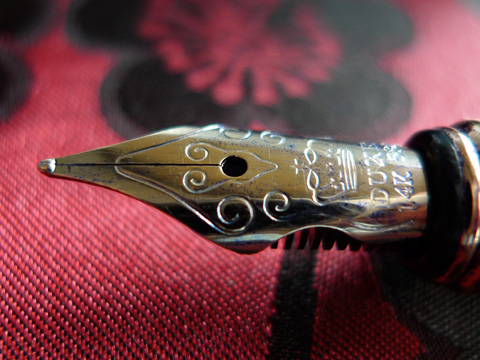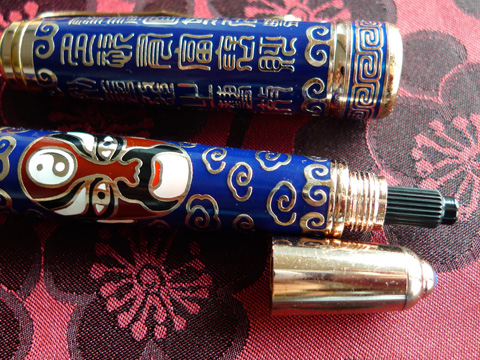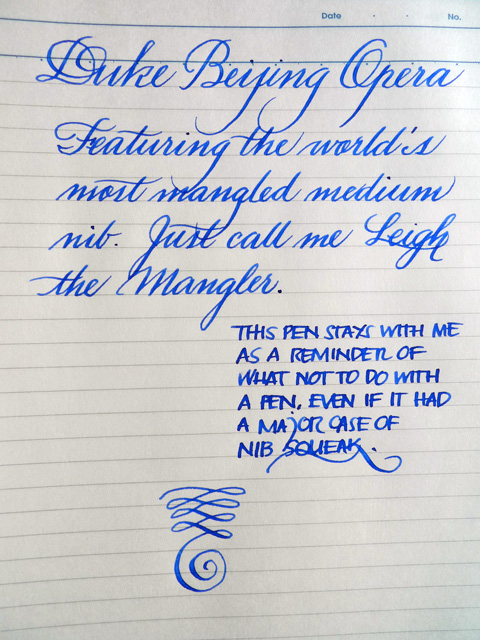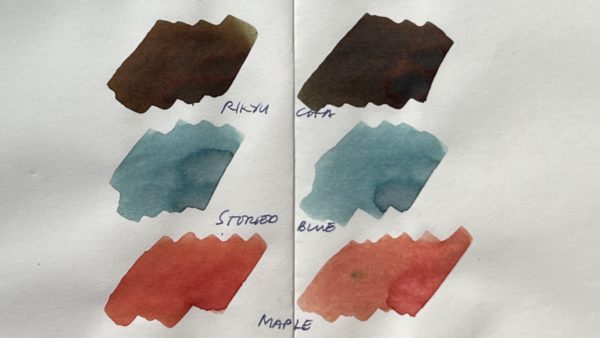Surely no other pen in my care has been this mishandled.
The Duke Beijing Opera came in a heavy box. I don’t know where the box is anymore; it must have warped the space-time continuum around it and sunk into a parallel universe.

The pen itself is almost as heavy as the box. It is enamel over brass. The decoration elements come from classical Chinese opera. Two character masks face away from each other on the barrel, floating against stylized clouds. Ancient Mandarin characters adorn the cap. The clip is a snake, and there are blue jewels on both ends.

And so we come to the nib. The Duke Beijing Opera came with a standard medium nib. Medium nibs didn’t irk me so much back then. What annoyed me no end was the nonstop squeaking when I wrote. It squeaked on the upstroke, downstroke, even a sidestroke. It was a cruel joke, that someone had taken a mouse and buried it alive in this nib.
In my enthusiastic and unlearned way, I decided I would remove the squeak. Not having micromesh (or any sensitivity) at the time, I succeeded (spectacularly, if I may say so) at deforming the iridium beyond salvation.

Practically the only iridium left on this nib is on the top.

I don’t know if this is a converter’s version of a sarcastic wink at piston fillers, but there you go. Unscrewing the cap at the end of the barrel reveals the end of the converter. Either way you still have to unscrew something. This is an interesting design that none of my other pens has.

In a fit of irony, the universe decided to grant this squeaky nib the ability to flex. That is the only reason why I still take out the pen from time to time, doodle with it, and sigh.
After all it’s been through, this pen deserves a trip to the spa. And a nibmeister.


